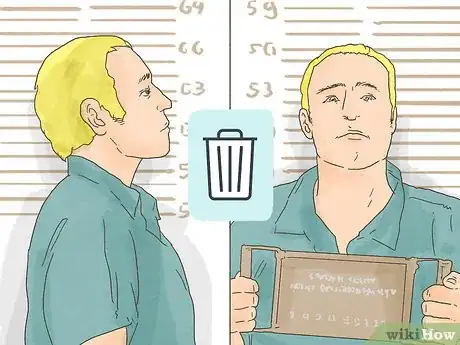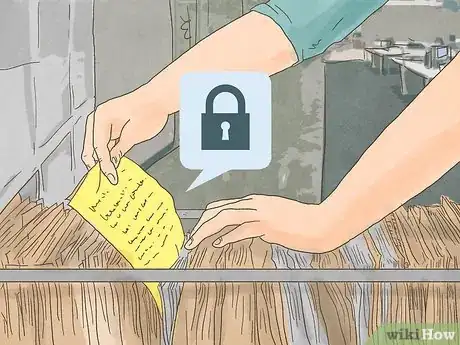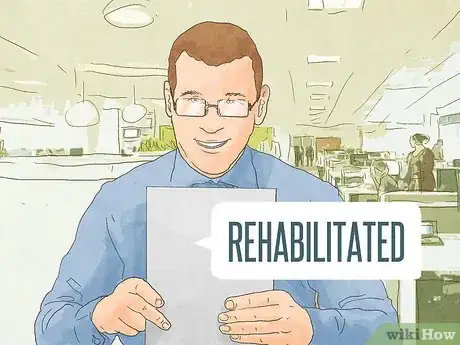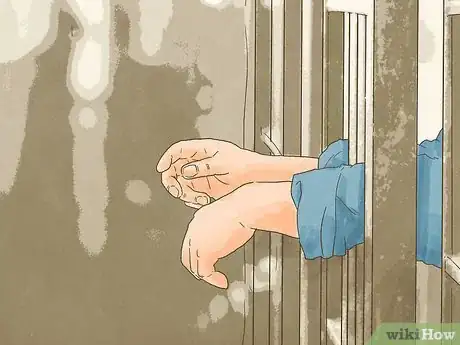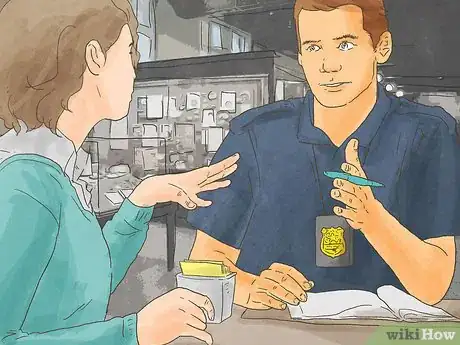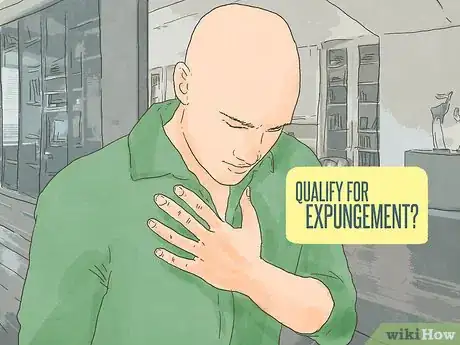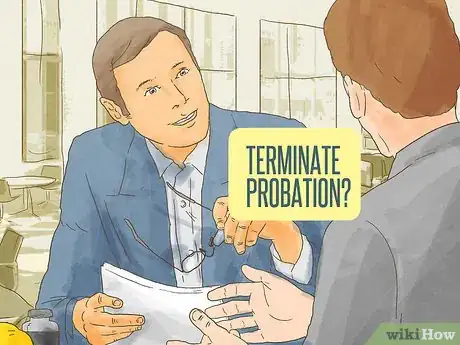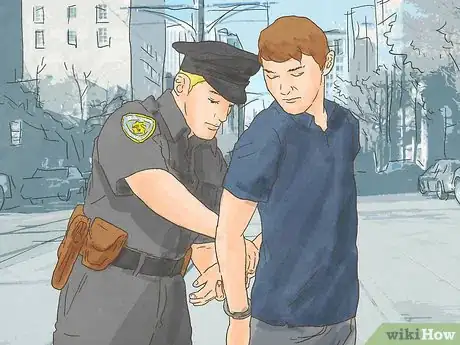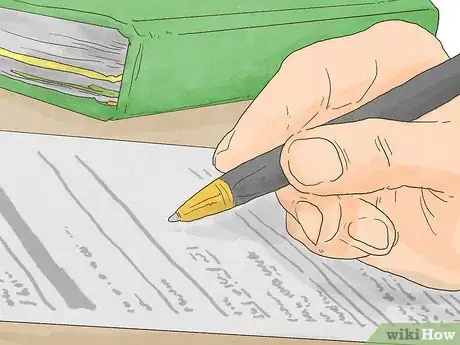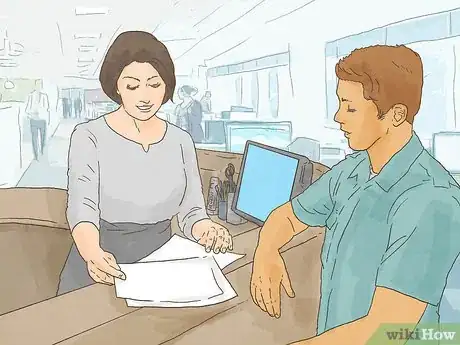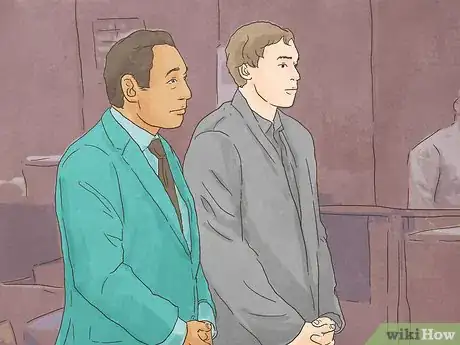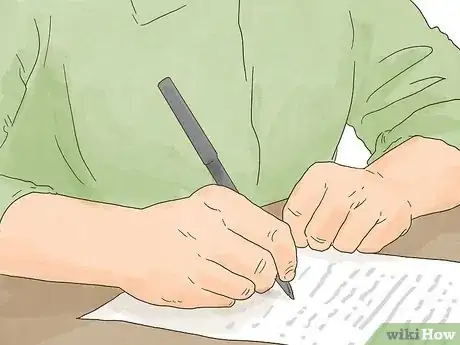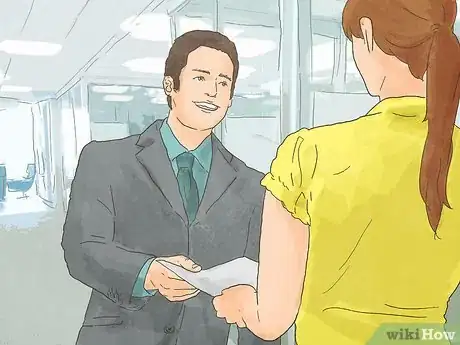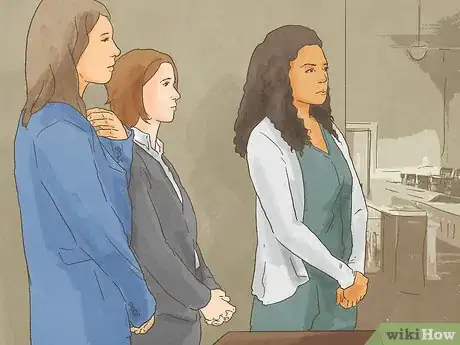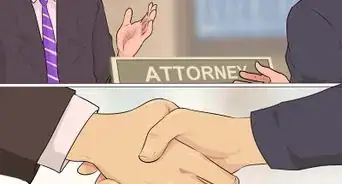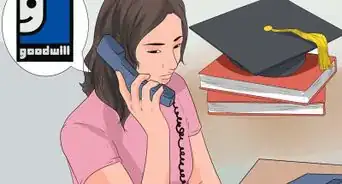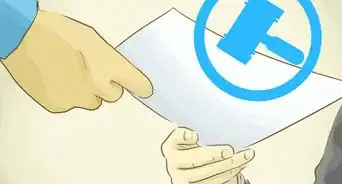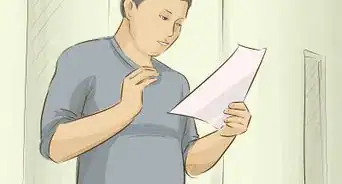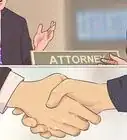This article was co-authored by Clinton M. Sandvick, JD, PhD. Clinton M. Sandvick worked as a civil litigator in California for over 7 years. He received his JD from the University of Wisconsin-Madison in 1998 and his PhD in American History from the University of Oregon in 2013.
There are 11 references cited in this article, which can be found at the bottom of the page.
wikiHow marks an article as reader-approved once it receives enough positive feedback. In this case, 83% of readers who voted found the article helpful, earning it our reader-approved status.
This article has been viewed 285,868 times.
Have you lost out on job opportunities because of a criminal record conviction? A conviction on your record can also be embarrassing and cause stress. There is some good news, though. If you live in California, you may qualify to expunge your criminal record. This means that past convictions will no longer show up on your record. You'll need to determine if you're eligible and fill out the paperwork.
Steps
Understanding Expungement
-
1Learn what expungement does. Most criminal conviction records are available to the public. Anyone who wants to search can find them. Expunging a conviction will alter your record, by removing or diminishing many offenses. In California, this means that when you apply for a private-sector job you no longer need to disclose the conviction.
- Generally, an expungement erases the criminal record. It is as if it did not ever exist.
- In California, however, you cannot entirely erase a criminal record from public view. Instead, the “expungement” will cause your case to be reopened, the guilty plea or verdict will be withdrawn, and then the charges dismissed.[1]
- The new disposition will read “dismissed in the interests of Justice.”[2]
-
2Have your records sealed. If you were not convicted of a crime but were wrongly arrested, then you could have your record sealed and destroyed. Sealing the record will result in the destruction of police reports, booking photos, fingerprinting, and record of the arrest.[3] You can get records sealed by pursuing a certificate of factual innocence.
- Petitioning to have a record sealed is almost always contested in court.[4] Furthermore, the burden of proof is high. You must prove that “no person of ordinary care and prudence would believe…that the person arrested or acquitted is guilty.”[5]
- Accordingly, you should seek the assistance of a lawyer who will help you present your case in the strongest light possible.
Advertisement -
3Get a certificate of rehabilitation. A certificate of rehabilitation is one way to get a pardon and is available to those living in California.[6] Instead of applying directly to the Governor's office, you would file a petition in the Superior Court. If the certificate is granted, then that serves as an automatic application for a Governor's pardon.
- Generally, you must have been in California as a resident for 3 years before filing.[7]
- The certificate and pardon will not erase the conviction or seal the records.
- You would also have to disclose on a job application that you have a prior conviction.
- The certificate and pardon would, however, allow you to serve on a jury. Also, some sex offenders are relieved from having to register.
-
4Seek a direct pardon. Individuals who have been convicted of a crime may apply for a direct pardon if they cannot apply for a certificate of rehabilitation. A direct pardon is most often used by those convicted of a crime in California but who now live out of state.[8]
- A pardon does not necessarily seal or expunge a criminal record. It does not allow you to answer that you have no record of a criminal conviction. A pardon is a gesture of forgiveness that restores certain rights. Pardons are also becoming increasingly rare.
- To apply for a direct pardon, you should get the application from the Governor's Office. Because pardons are rarely granted, you should seek the assistance of an attorney.
Analyzing Your Case
-
1Get copies of your criminal records. You need to know the details of your conviction in order to properly analyze your case. The court papers you received at the time of conviction should have the necessary information.[9] If you must order them, then give yourself several weeks for them to arrive.
- You can also get copies of your criminal records from your attorney, probation officer, or parole officer.
- Also, you can get them from the courthouses in which you were convicted, or by visiting the California Office of Attorney General website.
- You will have to pay a fee, though you may qualify for a fee waiver.[10]
-
2Check if you qualify. There are 3 possible outcomes when you apply for an expungement. First, if you meet certain qualifications, then you can simply petition for the conviction to be dismissed and it will be granted. Second, if you do not meet these conditions, then the court has discretion to dismiss the conviction. Third, there are some convictions which are not eligible for dismissal.
- In general, if you have completed your probation or were never given probation, then you can expunge a misdemeanor or felony conviction.
- If you are still on probation, then you will need to petition the court for termination of the probation. The court has discretion whether to terminate. If the court does not agree to terminate your probation, then you cannot yet get the expungement.
- You are ineligible for a dismissal if you were convicted of a felony and sentenced to state prison or were put under the authority of the Department of Corrections and Rehabilitation. In this situation, you must seek a pardon or a certificate of rehabilitation.
- In addition to having completed probation, you might have also needed to pay fines and restitution, attended counseling, or done community service. [11]
-
3Determine if you can terminate probation. You may still be able to get an expungement if you have not yet finished probation. The court will hold a hearing to determine whether to allow this. At the hearing, the judge will consider the following things:
- your performance while on probation
- the seriousness of the underlying conviction
- your criminal history
- why you think you deserve this relief (such as: your opportunity to get a good job, the fact that you support your family, the fact that you have strong community ties, etc.)
- any other factors that they deem relevant
-
4Make sure your case does not fall within specific exceptions. If you served time in any California State Prison, you will not qualify for an expungement. Expungement is only for people convicted of a misdemeanor or a felony that could have been charged as a misdemeanor. It is also limited to those sentenced to county jail time, probation, a fine, or a combination of those three.[12]
- There are also some offenses which you cannot expunge under any circumstances. These include any sexual crime involving a child (including molestation, rape, and sodomy) and statutory rape.[13]
-
5Determine which forms you will need. In California the forms that you must fill out to get an expungement are called PC 1203 forms. There are blank forms which you can fill out by checking off different boxes. You will also need to fill out a blank Order of Dismissal form.
- To expunge a misdemeanor, file a Petition to Dismiss a Misdemeanor if you've completed probation.
- If you haven't completed probation, then you must file a Motion to Terminate Probation or a Petition for Dismissal if the motion isn't granted. The form should be available at your local courthouse, or you will have to draft it yourself.
- To expunge a felony, you first need to file under PC § 17(b)(3) to reduce the felony to a misdemeanor. Your local courthouse may have a form, or you will have to draft it yourself.
- You will also file a Petition to Dismiss a Misdemeanor or Petition to Dismiss a Misdemeanor. The forms for felony reduction are available at any court location.[14]
- In the case of a felony in which you were sentenced to prison time but instead served time in county jail, file under PC § 1203.41.[15]
Filing for Expungement
-
1Find a lawyer if possible. While you can represent yourself, you may have greater success if you find trained legal representation. You might be able to have a public defender file the paperwork on your behalf.
- You should contact the lawyer from your original trial and find out whether she can file the paperwork for you.
- If you cannot get a public defender and do not wish to use the lawyer from your original trial (or if she is unavailable), find a new lawyer. You could ask friends and family for referrals or search online for reviews of local attorneys.
- There are many different kinds of lawyers out there; be sure that the lawyer you retain is a certified specialist in criminal law who holds a license with the California bar.
-
2Get and fill out the forms. Download the necessary forms from the court's website or get them from the court in person.[16] Fill them out completely and accurately.
- You may want to attach any documents you want to show to the court. These documents can include proof of program or rehabilitation completion. Character reference letters and community service completion paperwork are also often included. They are not required but may be helpful.[17]
-
3File the forms and pay the fee. File the forms with the court where the offense occurred. Go to the office of the clerk of court with your completed forms and the filing fee.[18]
- The filing fee varies based on the county where you were convicted and whether you were convicted of a misdemeanor or a felony. For example, San Diego County charges a filing fee of $60 for a misdemeanor and $120 for a felony. Look up the cost in the area you live by visiting the court's website.
-
4Prepare for your hearing. After you file your paperwork, the court will schedule a hearing. It will be up to a judge to decide whether to grant your expungement. Before this hearing, it is a good idea to consult with an attorney about how best to prepare.
- Before the hearing, the court will notify the prosecutor in your case so that they can file objections to the application for expungement.
- The prosecutor's objections will set forth the specific reasons why they claim the expungement should be denied. You will want to have responses prepared to any foreseeable objection.
- Prepare a statement for the court and make copies of all documents and evidence related to your case that you wish to submit.
-
5Attend your hearing. Show up on time, dress appropriately, and behave respectfully. Address the judge by his or her formal title ("judge" or "your honor"). At the hearing, the court will either grant or deny the expungement based upon the evidence and arguments presented.[19] There are several things the court will consider when making this decision, such as:
- Whether you have been charged with or arrested for any more crimes.
- Your behavior since the offense. This includes your ability to keep a job and pay your bills and debts. It also includes education or job-training you've completed. Judges often will consider community involvement like joining a church or volunteering, too.
- Any arguments raised by the prosecution.
- Whether the government has an interest in maintaining your criminal record.
-
6Re-file if necessary. If the judge denies your petition, ask what you need to do to get your conviction expunged. The judge will tell you why he or she denied the petition, and what you need to do to get the petition granted. After listening to the changes that the judge suggests, make any necessary changes you can.
- You may re-file your petition 6 months after the original denial, after you have made the changes recommended by the judge.[20]
Seeking Pardon or a Certificate of Rehabilitation
-
1Gather the correct forms. If you do not qualify for expungement, then you should seek a pardon or a certificate of rehabilitation. To seek a Certificate of Rehabilitation, pick up a form at your county courthouse or download this packet and read the instructions.
- You are strongly encouraged to seek the assistance of an attorney when applying for a pardon, using either of these methods.
- You have the right to an attorney's assistance. If you want a public defender to help you, then you can request one.[21]
-
2Fill out the forms. The forms will ask for information about your convictions and punishments. You must list them all.
- Keep a copy for your records.
-
3File the forms. You will have to file the forms. The application for certificate of rehabilitation will be filed with the clerk of the county in which you reside.[22]
- There is no filing fee.
- At the same time, fill out and file a Notice of Filing, which is a form available in the packet. You must give this to the clerk with your application.[23]
-
4Gather materials for the hearing. You should be prepared to present evidence that you have turned your life around. Among the evidence a judge will consider:
- Character letters from people who know you.
- Letters from former Parole or Probation officers.
- Proof of employment or schooling.
- Letter from employers.
- Proof of awards or accomplishments.
-
5Attend the hearing. If the District Attorney decides that you meet the eligibility criteria, then she will schedule a hearing date and serve the Notice of Filing on the Governor as well as the District Attorney of each county in which you were convicted of a felony.[24] You will also be notified.
- You should show up to the hearing early, dressed as professionally as you can.
- You should expect the prosecutors who attend to oppose your application.[25]
-
6Wait for the Governor's decision. Whether you apply for a pardon directly or through the certificate of rehabilitation process, you must wait for the Governor's decision. The Governor has no published time-table for making a decision on pardons.[26]
- The application is forwarded to the Board of Parole Hearings for investigation. The Board contacts the prosecutor and victims and interviews them.
- If you have been convicted of more than one felony, the California Supreme Court must recommend pardon before the Governor can do so.[27]
Warnings
- This article should be considered legal information, not legal advice. If you need legal advice, contact a licensed attorney.⧼thumbs_response⧽
References
- ↑ http://www.saclaw.org/pages/expunging-criminal-records.aspx
- ↑ http://www.saclaw.org/pages/expunging-criminal-records.aspx
- ↑ http://www.shouselaw.com/destroy-arrest-records.html
- ↑ http://www.shouselaw.com/destroy-arrest-records.html
- ↑ http://www.lbcrimlaw.com/aop/california-expungement-of-criminal-convictions/#two
- ↑ https://www.gov.ca.gov/pardons/
- ↑ http://www.sdcourt.ca.gov/pls/portal/docs/PAGE/SDCOURT/GENERALINFORMATION/FORMS/CRIMINALFORMS/PKT016.PDF
- ↑ https://www.gov.ca.gov/pardons/
- ↑ http://www.courts.ca.gov/1070.htm
- ↑ http://www.courts.ca.gov/1070.htm
- ↑ http://www.saclaw.org/uploads/files/Step-by-Step/expungingcriminalrecords.pdf
- ↑ http://www.saclaw.org/uploads/files/Step-by-Step/expungingcriminalrecords.pdf
- ↑ http://www.saclaw.org/uploads/files/Step-by-Step/expungingcriminalrecords.pdf
- ↑ http://www.alameda.courts.ca.gov/Pages.aspx/Reduction-of-a-Felony
- ↑ http://www.courts.ca.gov/documents/cr180.pdf
- ↑ http://www.courts.ca.gov/documents/cr180.pdf
- ↑ http://www.saclaw.org/uploads/files/Step-by-Step/expungingcriminalrecords.pdf
- ↑ http://www.saclaw.org/uploads/files/Step-by-Step/expungingcriminalrecords.pdf
- ↑ http://www.saclaw.org/uploads/files/Step-by-Step/expungingcriminalrecords.pdf
- ↑ http://www.saclaw.org/uploads/files/Step-by-Step/expungingcriminalrecords.pdf
- ↑ http://www.courts.ca.gov/1070.htm
- ↑ http://www.sdcourt.ca.gov/pls/portal/docs/PAGE/SDCOURT/GENERALINFORMATION/FORMS/CRIMINALFORMS/PKT016.PDF
- ↑ http://www.sdcourt.ca.gov/pls/portal/docs/PAGE/SDCOURT/GENERALINFORMATION/FORMS/CRIMINALFORMS/PKT016.PDF
- ↑ http://www.sdcourt.ca.gov/pls/portal/docs/PAGE/SDCOURT/GENERALINFORMATION/FORMS/CRIMINALFORMS/PKT016.PDF
- ↑ http://johndrogerslaw.com/practice-areas/expungement/certificate-of-rehabilitation-application-for-governors-pardon/
- ↑ https://www.gov.ca.gov/pardons/
- ↑ https://www.gov.ca.gov/pardons/
- ↑ http://www.saclaw.org/pages/expunging-criminal-records.aspx
